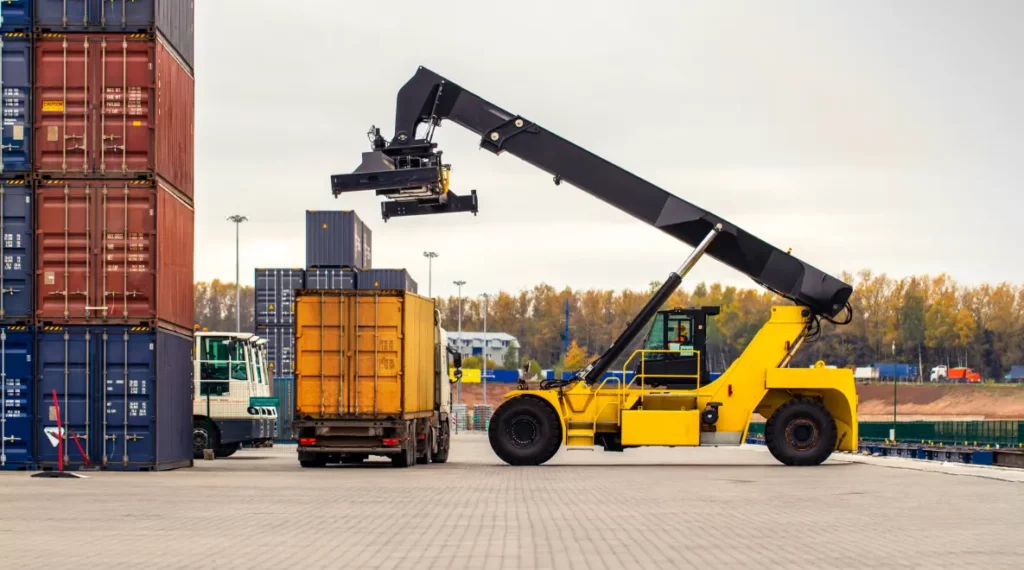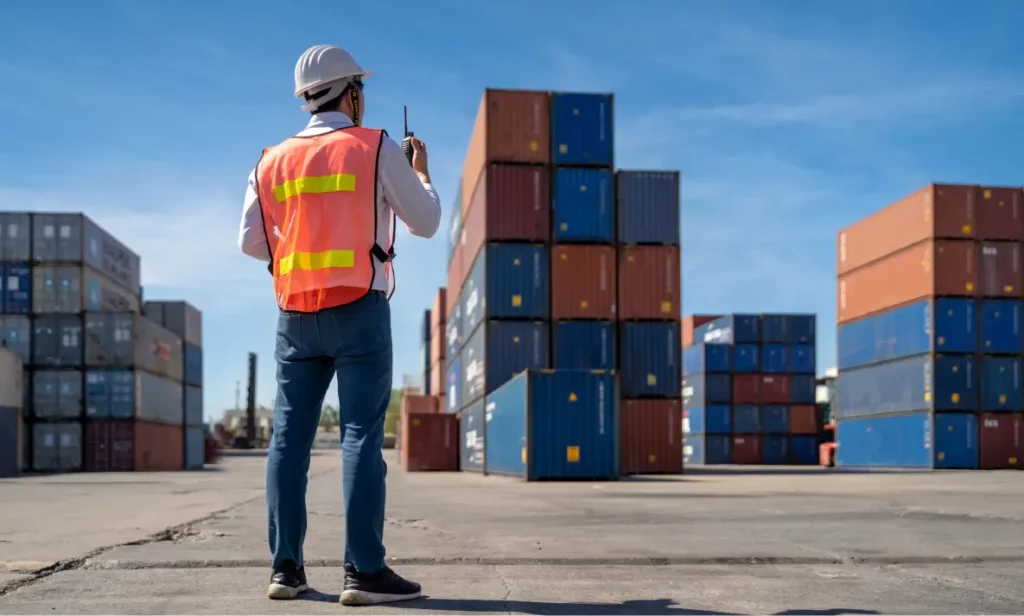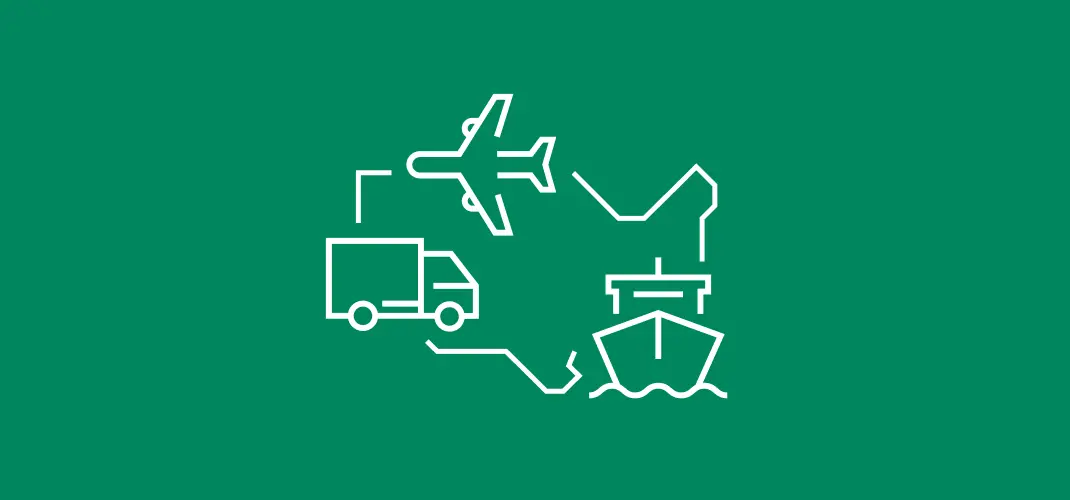Inbound logistics is a vital component of the global trade mechanism, ensuring a smooth flow of raw materials across borders to manufacturing facilities and warehouses. Its organization has a direct impact on the overall cost of the end product, affecting the bottom line of businesses engaged in importing goods into the U.S.
Today’s article aims to assist shippers entering the American market in refining their inbound logistics strategies. By focusing on the streamlined organization of supply chains, businesses can enhance their operational efficiency, ensuring a smooth and cost-effective flow of goods into the U.S. This guide offers insights and practical advice to help newcomers to international trade optimize their inbound logistics operations, fostering a competitive edge in a dynamic global market.
What is Inbound Logistics?

Inbound logistics refers to the process of procuring, transporting, and storing raw materials or finished goods from suppliers to a company’s warehouse or manufacturing facility. It is an essential function within the supply chain, focusing primarily on the incoming flow of goods necessary for production or resale. This aspect of logistics ensures that businesses have the materials they need when they need them without unnecessary delay or expense.
Unlike outbound logistics, which deals with the movement of finished products from the company to the end consumer or another company, inbound logistics concentrates on supply, while outbound logistics focuses on distribution. The main differences between these two logistics types lie in their direction of flow and their objectives. Inbound logistics aims to optimize the procurement process and manage supplier relationships to reduce costs and improve efficiency. On the other hand, outbound logistics prioritizes customer satisfaction and aims to deliver products in a timely and cost-effective manner.
Challenges in Inbound Logistics

Inbound logistics is a path with many potential pitfalls. International shippers may face several challenges that can significantly impact costs. Among the most common ones are:
Customs and Regulatory Compliance:
Complicated customs and regulatory requirements may turn into significant challenges. Delays in customs can lead to increased storage and demurrage charges, escalating the overall cost of goods. To avoid potential problems with customs compliance and streamline the customs process, reducing delays and associated costs, you should stay updated with trade regulations and leverage technology for accurate documentation.
Transportation Costs:
Volatility in fuel prices and transportation fees can inflate the cost of inbound logistics. Global economic conditions influence these costs, making them vary widely from country to country. An evident solution is optimizing shipping routes, consolidating shipments to achieve better rates, and engaging long-term contracts with reliable carriers to lock in more favorable terms.
Supplier Reliability:
Dependence on suppliers for timely and quality deliveries is another challenge. Delays or inconsistencies in supply can disrupt production schedules, leading to increased costs. However, building strong relationships with suppliers and developing a diversified supplier base can minimize risks. Implementing supplier performance tracking can also help identify and address issues promptly.
Inventory Management:
Excess or insufficient inventory can both be costly. Efficient inventory management ensures that there is enough stock to meet demand without tying up too much capital in stored goods. To overcome this challenge, employ just-in-time (JIT) inventory strategies and utilize advanced forecasting tools. These allow for maintaining optimal inventory levels while reducing storage costs and minimizing the risk of stockouts.
Step-by-Step Guide to Streamline Your Inbound Logistics

Streamlining inbound logistics is one of the most critical steps for enhancing the cost efficiency of supply chains. Here’s a comprehensive step-by-step guide tailored for international shippers to optimize their inbound logistics processes:
1. Do a Supply Chain Audit:
Begin by assessing your current inbound logistics to identify inefficiencies and areas for improvement. Analyze transportation costs, supplier performance, inventory levels, and compliance with customs regulations. This audit will provide a clear picture of where changes are needed to boost efficiency and reduce costs.
2. Optimize Supplier Selection and Management:
Carefully select suppliers based on their reliability, quality of goods, and ability to deliver on time. Establish clear communication channels and set expectations for performance. Diversify your supplier base to reduce dependency on a single source and mitigate risks associated with supply chain disruptions.
3. Implement Technology Solutions:
Utilize technology to enhance visibility and control over your inbound logistics. Supply chain management software can help track shipments in real time, manage inventory levels, and streamline documentation for customs clearance. Automated systems can also facilitate better communication with suppliers and carriers.
4. Negotiate Transportation Contracts:
Work closely with freight carriers to negotiate contracts that offer the best value. Consider factors such as shipping routes, delivery times, and flexibility in handling unexpected changes. Bulk shipping and long-term contracts can often secure lower rates, reducing transportation costs.
5. Embrace Just-in-Time (JIT) Inventory:
Adopting a JIT inventory strategy can significantly reduce storage costs and minimize the risk of overstocking. This solution requires precise coordination with suppliers to ensure materials arrive exactly when needed, reducing the need for large inventory holdings.
6. Streamline Customs Clearance:
To avoid delays in customs, ensure that all documentation is accurate and complete. Partner with customs brokers or use technology solutions that efficiently manage customs regulations.
7. Continuously Monitor and Adjust:
Supply chains are dynamic, and what works today may not work tomorrow. Regularly review and adjust your inbound logistics strategy based on changes in the market, supplier performance, and your own business needs. Continuous improvement should be an integral part of your logistics operations.
8. Foster Strong Relationships:
Building strong relationships with suppliers, carriers, and customs brokers can lead to better service, more favorable terms, and quicker resolution of issues. Communication and collaboration are critical for a resilient and efficient supply chain.
How US Inbound Helps Optimize Inbound Operations
US Inbound prides itself on providing innovative solutions that streamline inbound logistics for international businesses. With an excellent reputation built on deep knowledge and expertise, US Inbound offers a suite of services tailored to the unique needs of companies importing goods into the U.S. Its solutions combine technology, industry best practices, and strategic insights to optimize the inbound logistics process, enhancing efficiency and reducing costs for their clients.
Customized Logistics Solutions:
Recognizing that no two businesses are alike, US Inbound creates personalized logistics plans. These plans are designed to address the specific challenges and goals of each client, ensuring a perfect fit for their operational needs. Whether managing complex supply chains or customs regulations, US Inbound ensures that every aspect of inbound logistics is optimized for efficiency.
Advanced Technology Integration:
US Inbound utilizes cutting-edge technology to offer real-time tracking, inventory management, and automated customs clearance. This technology gives businesses unparalleled visibility into their supply chains, allowing for timely decision-making and enhanced control over the inbound logistics process. The use of technology also streamlines communication with suppliers and carriers, making the entire process more efficient.
Expertise in Customs and Compliance:
With a thorough understanding of customs regulations and compliance requirements, US Inbound ensures that shipments move smoothly through customs, minimizing delays and avoiding costly penalties. This expertise in handling the complexities of international trade laws and agreements significantly benefits businesses looking to import goods into the U.S.
Partnership and Collaboration:
US Inbound always acts as a strategic partner to every client. The company works closely with businesses to understand their long-term goals and provide ongoing support and advice to continuously improve inbound logistics operations. Its commitment to excellence, combined with a deep understanding of the logistics industry, makes US Inbound a preferred partner for companies looking to enhance efficiency and cost-effectiveness in their supply chain operations.
Key Points:
This article has outlined essential strategies and insights for international shippers to enhance their inbound logistics operations, focusing on cost efficiency and streamlined processes. We discussed common challenges in inbound logistics, from customs compliance to transportation costs, and offered solutions to overcome these hurdles. We also provided a step-by-step guide highlighting practical measures for optimizing inbound logistics, including conducting supply chain audits, optimizing supplier management, and leveraging technology.
Optimizing inbound logistics is crucial for maintaining a competitive edge in the global marketplace. Partnerships with recognized leaders in inbound logistics, such as US Inbound, appear to be one of the most effective measures in this process. Their personalized approach, deep knowledge of every logistics aspect, and years of expertise guarantee significant improvements in operational efficiency, cost savings, and overall supply chain performance.




